Disclaimer: This guide is not government-affiliated. Information provided as-is without warranty of accuracy. Contact your local housing authority to verify current information. | Last Updated: September 24, 2025
Look, Maryland’s Section 8 system is a rigged, confusing mess—and if you’re on the edge right now, you don’t have years to waste on dead-end waitlists and recycled government advice. I spent months figuring out which county lists actually move, how to trigger emergency preferences, and the exact phrases to get past the gatekeepers—the stuff you’ll never find on any official website. If you need real tactics to beat this broken system before it chews you up, read on right now.
Critical Legal Info for Maryland
Maryland doesn’t mess around: landlords can’t turn you down just because you use a Section 8 or Housing Choice Voucher. That’s state law—The Housing Opportunities Made Equal (HOME) Act, 2020. If landlords break this law, they risk penalties. Keep records and know your rights.
You’re Here Because You Need Affordable Housing in Maryland
Let’s cut the crap: nobody reads about Section 8 for fun. If you’re here, something went sideways—maybe an eviction notice just hit your door, maybe a hospital bill swallowed your savings, or maybe your paycheck’s gone before the month’s half over. Rent keeps climbing, groceries cost more than your car payment, and you can’t remember the last time you slept without that pit in your stomach.
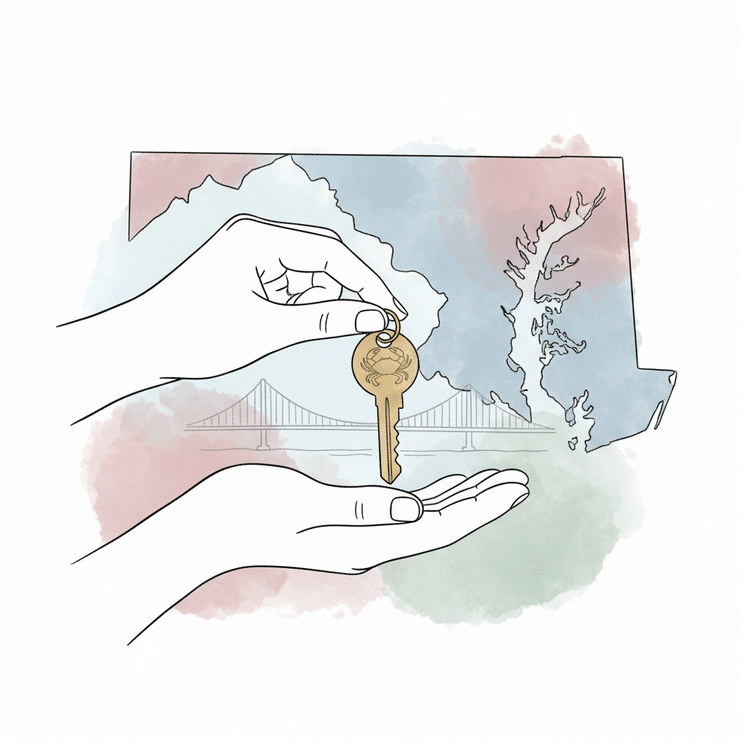
You’ve probably already done those desperate 2 AM Google searches, scrolling through garbage advice and dead-end links on your phone, wondering what’s left. That panic? Totally normal. The system’s designed to wear you down with paperwork, runarounds, and waitlists that stretch for years. Not weeks—years. The truth nobody tells you: the whole thing feels like it’s built to keep you out, not help you in.
People love to act like there’s some magic hack, like if you just “try harder” you’ll get a voucher tomorrow. Yeah, right. Maryland’s housing system is a maze, and most of the advice out there is useless or outdated. You need the real playbook—not the stuff they put on those shiny pamphlets, but the gritty details: which waitlists actually move, how to use emergency preferences to cut the line, and what to say (and NOT say) when you finally get someone on the phone.
This guide isn’t here to make you feel better. It’s here to get you closer to a place to sleep that you can actually afford. If you’re ready to move fast and play the system the way insiders do, keep reading. Here’s what actually works.
Section 8 Is Available in Every Maryland County
Here’s what actually happens: Section 8 is everywhere in Maryland. Seriously, every single one of the 24 counties runs Section 8. Don’t let anyone tell you it’s not in your area. Here’s the full list—don’t skip it, because at some point you’ll need to know exactly who covers where:
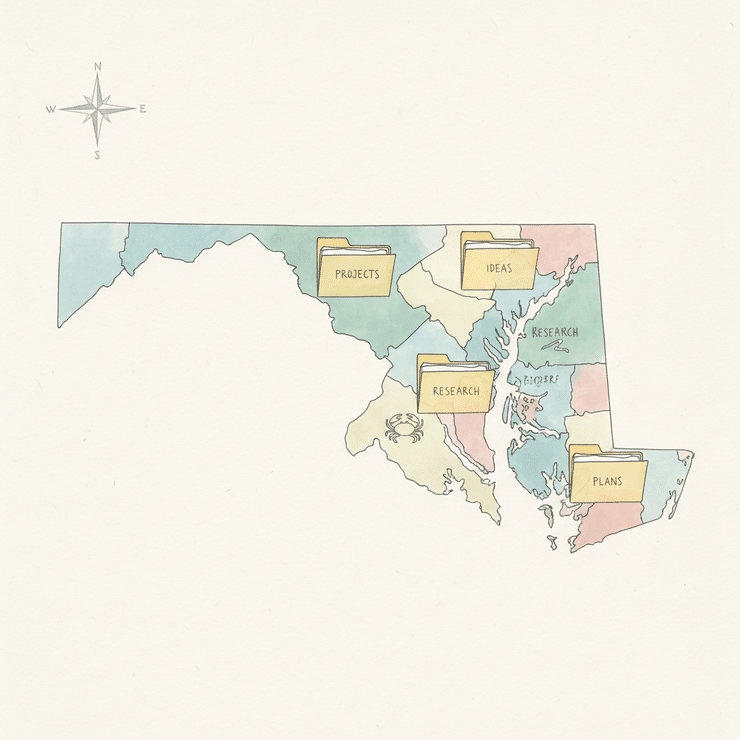
Montgomery • Prince George’s • Baltimore • Anne Arundel • Baltimore City • Howard • Frederick • Harford • Carroll • Charles • Washington • St. Mary’s • Wicomico • Cecil • Calvert • Allegany • Worcester • Queen Anne’s • Talbot • Caroline • Dorchester • Garrett • Somerset • Kent
The truth nobody tells you: a lot of housing authorities cover more than just their county. That means—even if you live in County A—you can (and should) apply through County B’s housing office if their waitlist is open. Don’t tie yourself to one county out of loyalty or habit; it’s about getting your name on as many lists as humanly possible. If one list is closed, another one nearby might be wide open.
Here’s how you play the game: apply to every list within 100 miles. No, that’s not overkill. These lists don’t open and close together—one will slam shut while another quietly cracks open with zero notice. Get on all of them. This is not the time to be picky about location. Cast your net wide, and don’t be afraid to Google ‘[your county] housing authority’—just watch out for ancient, broken websites. If a site looks like it hasn’t been updated since 2002, call the number anyway. Annoying? Yes. Necessary? Also yes.
Critical warning: Wait times are all over the place. Some counties—especially the big ones—measure waits in years. Not months. Years. Others run random lotteries, where you could get lucky or get nothing. And the rules? They change with zero warning. What worked yesterday could be gone tomorrow. So if you see a list open, jump on it right then—don’t wait for “a better time.”
Yeah, it’s messed up, but here’s how to deal: Maryland is right next to DC, Virginia, Pennsylvania, Delaware, and West Virginia. Nobody at the housing authority cares if you cross state lines to apply elsewhere. Apply everywhere you can reach. Sometimes the lists in these neighboring states are less jammed, and if you get approved, they’re not going to stop you at the border. If you’re desperate, widen your search radius and don’t look back. The more lists, the better your odds—period.
What Section 8 Housing Really Means in Maryland
What Section 8 Actually Is in Maryland
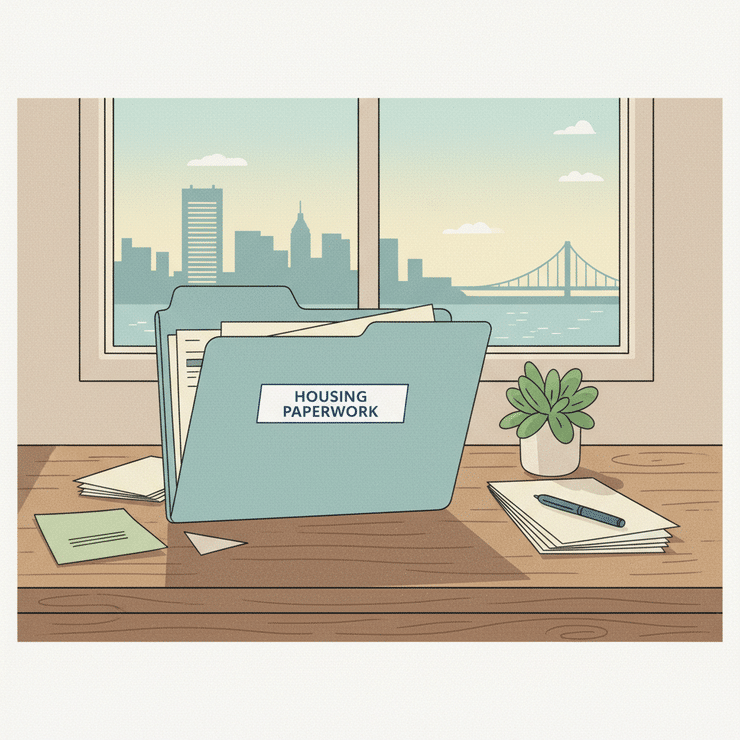
Here’s what actually happens: Section 8 is supposed to make rent suck less. You get a voucher, you pay about 30% of whatever income you have, and the government covers the rest—if your landlord is willing to wait for their check (and not all of them are). That’s the Housing Choice Voucher. But there’s a catch: there are two types. One is tenant-based (the golden ticket where you pick the unit), and the other is project-based (the voucher is stuck to a specific building, and you have to live where they tell you). Maryland has both, but don’t get it twisted—the lists aren’t connected. You’re not on both just because you applied once.
Critical warning: No matter what, you’re still shelling out some cash every month. This is not “free rent.” And finding a landlord who’ll actually take a voucher is its own full-time job. Most listings you see? They don’t mention if they accept Section 8 or not. You have to ask, and sometimes you’ll get ghosted or turned down flat. Yeah, it’s messed up, but here’s how to deal: don’t waste time on units that say ‘no vouchers,’ and don’t bother with big management companies unless you know they play ball. Look for smaller landlords and use search terms like “Section 8 welcome” or “housing voucher accepted” when you’re hunting online.
What Maryland Applicants Should Expect Right Now
The truth nobody tells you: getting on the list is just the start of the waiting game. In Maryland, the average wait time for subsidized housing is 47 months. Let that sink in—almost four years. That’s nearly two years longer than the national average, and the line’s only getting longer each year. Don’t believe anyone who says you’ll get your voucher in a few months. That’s fantasy.
Specifically in Baltimore, it’s even tougher—most people in the system are single parents with kids. The need is off the charts, and the agencies are drowning. So yeah, expect to fight for every inch. That doesn’t mean don’t try; it means get ready for a marathon, not a sprint.
And don’t screw up the income math. You need to be under 50% or 80% of your county’s Area Median Income (AMI)—the exact number depends on where you live and how many people are in your household. Google “[your county] AMI 2025” before you even fill out an application. If you’re a dollar over, they’ll toss your paperwork without blinking.
Misconceptions About Section 8 in Maryland
- Myth: “If I apply, I’ll get a spot soon.” Reality: You’ll wait years unless you’re in a top priority group (disabled, elderly, literally homeless right now). For most people, it’s a long grind.
- Myth: “Section 8 means I can live anywhere.” Reality: You only get the green light if the landlord says yes and the unit passes a government inspection. Run-down places don’t make the cut, and some landlords just say no up front.
- Myth: “I can only apply in my county.” Reality: Apply everywhere you’re willing to live—including neighboring states if you want out. The more lists you’re on, the better your odds. There’s zero penalty for casting a wide net.
- Myth: “The process is automatic.” Reality: You have to stay on top of this. No one’s going to call and remind you. You miss a deadline, you’re done. Keep copies of every paper, follow up constantly, and don’t wait for them to reach out. You have to chase them, not the other way around.
Bottom line: the system’s slow, overloaded, and unfair, but people do get through. You just have to play it smarter than they want you to.
Step-by-Step Guide to Applying for Section 8 in Maryland
Alright, here’s what actually happens if you want a shot at Section 8 in Maryland for 2025—no sugarcoating. You need to move NOW, and you need to move smart. The truth nobody tells you: the system is set up to waste your time and sanity. So let’s beat it at its own game.

Step 1: Google like your life depends on it. Don’t just type your county and call it a day. Search for “[your county] housing authority” AND every neighboring county too. Don’t trust your memory—grab a map, draw a 50-mile radius around your location, and list every housing authority inside that circle. Do this today. If you skip this, you’ll miss openings and lose months. County lines don’t care about your crisis—cast a wide net.
Step 2: Get your paperwork together—now, not later. Here’s what every housing authority will demand, and if you’re missing even one piece they’ll toss your application aside without a word:
- Birth certificates (for everyone in your household)
- Social Security cards
- Last 3 pay stubs (or proof of income/no income)
- Bank statements
- Current lease (if you have one)
- Any medical documents proving disability or urgent need
Scan every single one into a PDF. Not a photo, not a screenshot—a clean PDF file. If you can’t scan at home, libraries or shipping stores have scanners. Don’t let this step trip you up—they WILL reject blurry phone pics.
Step 3: Spreadsheet = survival. Open up a spreadsheet (Google Sheets, Excel, whatever you use). Make columns for: Authority Name, List Status (Open/Closed), Date Applied, Login Info, Next Check Date. This isn’t busywork; this is how you avoid applying twice to the same place, or forgetting which list opens next. Housing authorities lose paperwork all the time. Your spreadsheet is your backup memory.
Step 4: Use this exact script when you call—don’t give them your life story. Say: “Hi, I need to know if your Section 8 list is open and when the next opening might be.” That’s it. No sob stories, no details about your eviction, no letting them put you on hold forever. They’ll try to talk circles or ask unnecessary questions—don’t let them. Get the info, hang up, add it to your spreadsheet.
Step 5: Be ready for chaos when lists open. When a waitlist opens (could be once a year, could be never), EVERYONE will be online trying to get in. Portals crash, forms freeze. Here’s how you win: set alarms for the minute it opens. Have all your PDFs ready and labeled. Upload only PDFs. If you try to upload a photo or miss a required field, you’ll get kicked out—and by the time you fix it, the list is closed. No second chances until next year—if ever.
Step 6: Follow up—like clockwork. Every 30 days, not a day sooner or later, check in. Call or email and say: “Just checking my status.” That’s it. If you check in at 29 days, you look desperate. At 31 days, they forget you exist. Mark this on your calendar or you WILL fall through the cracks. The system is hoping you’ll give up or forget—don’t give them the satisfaction.
Yeah, it’s messed up, but here’s how to deal: Stay organized, do the boring paperwork, and don’t expect anyone to give you straight answers unless you demand them. You’ve got this.
How to Find Section 8 Resources in Maryland
Look, you can waste hours on Google and still miss the actual opening, because the system is a mess. Here’s what actually works:

First—Google these exact phrases:
- “[your county] housing authority waiting list”
- “Maryland Section 8 application”
- “affordable housing [your zip code]”
Do NOT just click the first ad or some sketchy .com site. You’re looking for real .gov or .org links. If you land on a nonprofit, look for one that actually posts about application help, not just “raising awareness.”
Next, Facebook is where the real-time dirt gets dropped. Join groups like:
- “[Your City] Housing Authority Updates”
- “Section 8 Maryland”
- “[Your County] Affordable Housing”
Turn ALL notifications ON—even for comments. People post last-minute list openings, paperwork hacks, and which offices are ghosting calls this week. You might even find out about pop-up lottery openings before they’re public. That’s how people actually get in—nobody from the agency is going to call you.
Nonprofits: Some are a straight-up waste of time—they’ll just tell you to “check the website.” The good ones (and there are a few) will literally walk you step-by-step through the application or get you bumped up if you have an emergency case. These are usually listed on the actual housing authority site or mentioned in those Facebook groups. If they’re not, don’t bother.
The housing authority websites themselves? Total maze. Ignore the About page, ignore the photo of the mayor shaking hands. Go straight to “News” or “Announcements.” That’s where they post when (if ever) the waiting list is actually open. If you don’t see a date, assume it’s closed. Don’t waste your time reading mission statements.
Now, here’s the truth nobody tells you: There are legal fast tracks, but they don’t advertise them. If you’re homeless, disabled, fleeing domestic violence, or need family unification, you can get emergency preference. Do not be shy—ask point-blank about this when you call or apply. If you wait for them to mention it, you’ll be waiting forever. Say, “Do you have any emergency preference or expedited Section 8 options for people in my situation?” If you qualify, push for it. They won’t make it easy, but it’s the only way to cut the line.
Yeah, it’s messed up, but here’s how to deal: Use these search terms, stalk the right Facebook groups, skip the fluff on official sites, and always ask about emergency preference. That’s how people actually get housed.
What to Expect When Applying for Section 8 in Maryland
Alright, here’s what actually happens when you try to get Section 8 in Maryland. No sugarcoating—just what you’re walking into, so you don’t get blindsided.
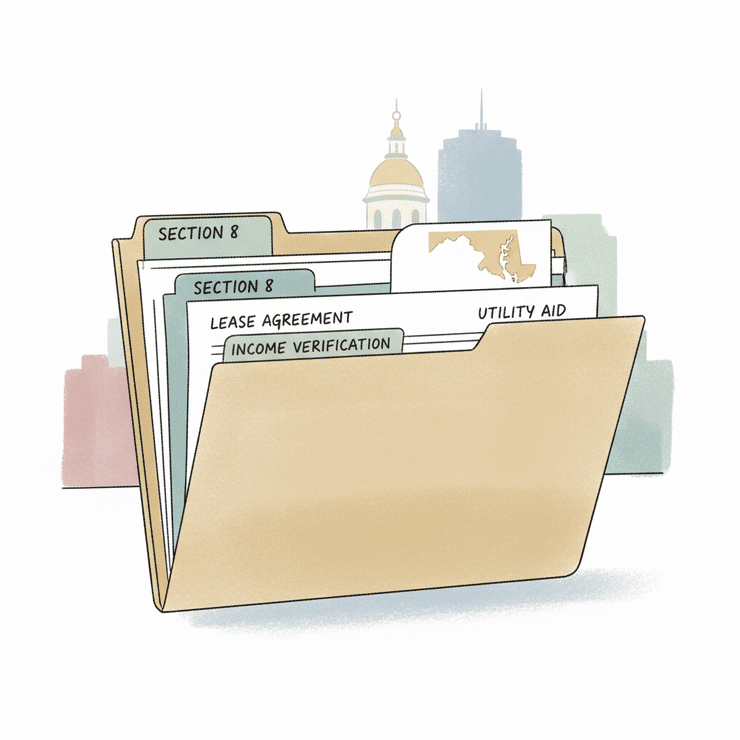
The Good
If you get a voucher? That’s your golden ticket. Your rent drops to something you can actually manage, and you finally get a shot at staying in one place without the constant eviction threat. Seriously, for some folks, this is the only way out of that paycheck-to-paycheck nightmare.
Here’s the other thing nobody tells you: Some project-based properties (not the regular vouchers—these are units tied to specific buildings) have way shorter waitlists. If you’re not picky about where you live and you call every property manager on those lists, sometimes you can move in months instead of years. Flexibility = speed, so don’t get hung up on one area or apartment type.
And don’t sleep on those housing Facebook groups and forums. Real people drop tips about openings, which offices are actually picking up the phone, and which landlords are voucher-friendly. Sometimes they’ll even send you direct referrals. It’s word-of-mouth warfare out there; plug in or you’ll miss your shot.
The Bad
Now, the ugly math. The average wait in Maryland for a voucher is 47 months. That’s almost four years—and that’s only if your paperwork stays perfect and your status doesn’t change. Miss a form or let your phone number lapse and you’re toast. Some counties? Their lists don’t even open every year. You could be refreshing the site for years and still get nowhere.
And when you finally land a unit, the government’s first payment to your landlord can take 30 to 60 days after you move in. You need a landlord who’s okay with waiting or you’ll have to front that rent yourself. Most won’t say this upfront, so ask: “Are you willing to wait for the first housing payment?” If they say no, keep hunting.
Plus, before you move in, there’s a brutal inspection. If anything’s not up to code—smoke detectors, chipped paint, broken outlets—the deal can blow up at the last minute. Some landlords just give up rather than fix things. Don’t sign anything until you know the place passed inspection, or you’ll be wasting weeks on a dead end.
The Ugly
Here’s the truth nobody tells you: Waitlists close without warning and can stay closed for literal years. You can follow every step, do every form, and still get stuck just waiting. And don’t count on a call or reminder—if you miss a deadline or something goes missing, you’re back at square one. No one’s checking up on you.
And even though it’s illegal, some landlords still refuse Section 8 or throw up extra barriers just to make you quit. They’ll make you pay extra deposits, run you around for extra paperwork, or “forget” to return your call. If you get the vibe they’re stalling, they probably are. Move on fast—don’t waste your shot on someone who doesn’t want to play ball.
Bottom line: The system’s a mess, but there’s still a way through it as long as you know where the landmines are. Don’t be polite, don’t wait for a callback, and never assume anyone’s looking out for you but you.
Take Action Today to Get Section 8 in Maryland
Look, waiting for everything to be “just right” is the biggest trap. Here’s what actually happens: the people who hustle—who call, who bug offices, who camp out on Facebook—are the ones who even get a shot. If you wait for a perfect list to open or for someone to call you, you’ll miss your chance. Don’t let that happen.
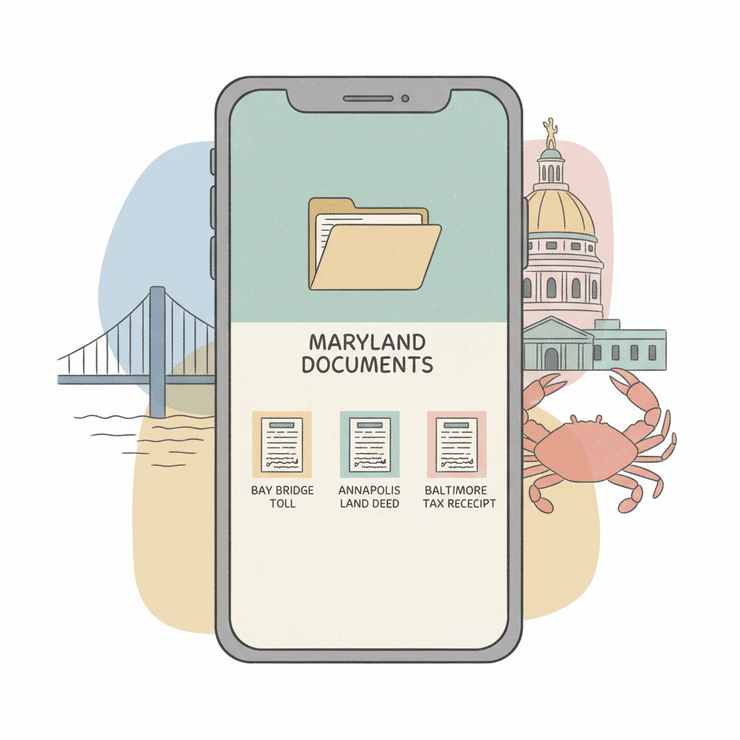
Next Steps You Can Take Right Now in Maryland
- First thing: map every single housing authority within 50 miles of you. If you’re in Maryland, that means looking beyond your city—think whole counties. Google “[your county] housing authority” and don’t just trust the first website you see; some are so outdated it’s a joke. Call every number you find, even if it looks old. Ask specifically: “When will your Section 8 waitlist open next? Can I get on a notification list?” If they say it’s closed, ask when it last opened. Sometimes they’ll tell you off the record when to keep an eye out.
- Before you touch a single application, get your paperwork in order. The truth nobody tells you: when a list opens, you might have minutes—not days—to upload docs. Scan your birth certificates, Social Security cards, proof of income, IDs, everything. Put them in a folder on your phone and in your email. If you’re missing something, start tracking it down now, not later. Don’t be the person who loses their spot because you couldn’t find a pay stub.
- Facebook is where the real-time action happens. Join every local housing or Section 8 group you can find. Set your notifications to “All Posts”—openings and warnings get posted by real people faster than any official site. When someone drops a tip (“Baltimore County list is open!”), jump on it immediately. Lists can fill in hours—sometimes minutes.
Don’t Wait for a Perfect Moment
Here’s the raw truth: there’s never a “good” time for this. If you keep waiting for your life to calm down or the system to get easier, you’ll still be waiting next year. The sooner your name is on a waitlist, the sooner the clock starts. And yeah, you’ll hear horror stories—people waiting years, lists lost in the shuffle, total radio silence. But the only guarantee is if you don’t apply, you get nothing.
Remember: You’re Not Alone
It feels like you’re screaming into the void, but thousands of people are fighting this same battle in Maryland right now. The system is rough on purpose, but you’re not the only one getting jerked around. Lean on the people who get it—share what you learn, ask what worked for them, keep your network tight. Momentum is everything. Start today, stay organized, and don’t let the wait grind you down. Even if you’re staring at a years-long line, taking that first step now is the only way you ever get out the other side.